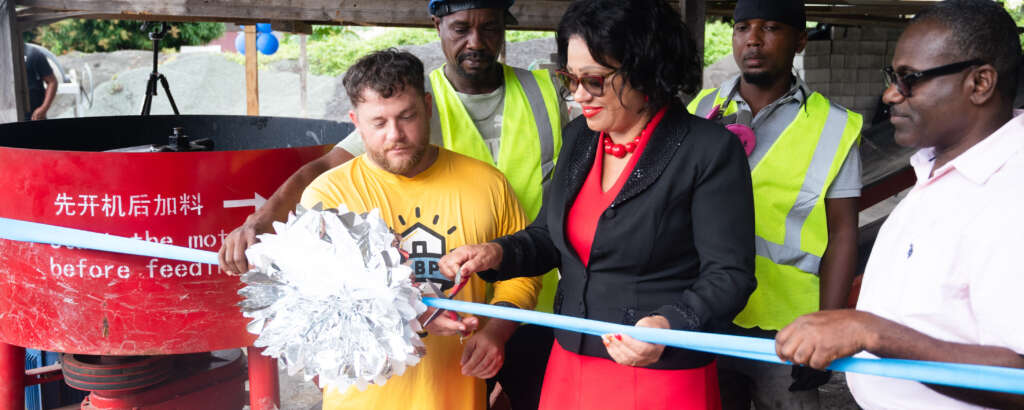St. Vincent
On April 9, 2021, La Soufrière volcano erupted for the first time in 40 years. An estimated 23,4004 people were displaced to the southern end of St Vincent and the Grenadines and neighboring countries. Many low and moderate-income families could not fully recover on their own. As of August 2022, more than 3,000 of those homes were still in need of repairs. Recognizing the need on the island, Andy Stofleth, Executive Director of SBP's Bahamas operation, considered how SBP could best assist in the reconstruction and recovery efforts. Volcanic ash blanketed most of the island, the weight of which caused structural damage to many homes. Then he asked a brilliant question: what if the problem could be part of the solution? Could upcycling volcanic ash like the ancient Romans produce concrete blocks help to rebuild homes in St. Vincent, reducing the total cost of reconstruction?

In June 2021, SBP met with the government of St. Vincent and the Grenadines Roads, Buildings, and General Services Authority to discuss this concept. The government authority was open to the idea because of the high demand for affordable building materials on the island. Their engineers tested the volcanic ash in various mix designs to determine what ash ratio they could include without compromising the compressive strength of the blocks. In July 2021, SBP established a prototype block and began working to fund a pilot program that could prove the concept and support the rebuilding. In January 2023, SBP officially launched the pilot program to produce 160,000 blocks within a four-month period in partnership with the government of Saint Vincent and the Grenadines. With 1,300 active volcanoes around the world, this pilot could serve as a replicable program that could help other governments and humanitarian agencies to maximize volcanic ash to rebuild more affordably.
![row.image[0].title](/public/uploads/general/_gallery/SVBP_1.jpg)
![row.image[0].title](/public/uploads/general/_gallery/SVBP_2.jpg)
![row.image[0].title](/public/uploads/general/_gallery/SVBP_4-copy.jpg)
![row.image[0].title](/public/uploads/general/_gallery/SVBP_5.jpeg)
![row.image[0].title](/public/uploads/general/_gallery/SVBP_6.jpeg)

